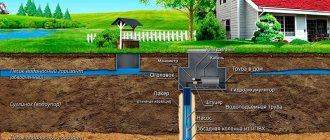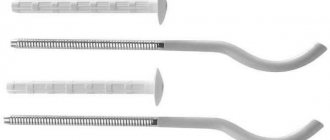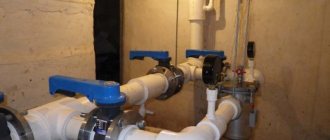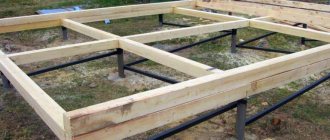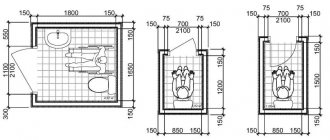How can you indicate the meaning of power lines? Is there an exact definition of the wires through which electricity is transmitted? The inter-industry rules for the technical operation of consumer electrical installations have a precise definition. So, a power line is, firstly, an electric line. Secondly, these are sections of wires that extend beyond the boundaries of substations and power stations. Thirdly, the main purpose of power lines is to transmit electric current over a distance.
Iron power transmission poles
Classification of power lines
According to the same rules of MPTEP, power lines are divided into overhead and cable. But it should be noted that power lines also transmit high-frequency signals, which are used to transmit telemetric data, for dispatch control of various industries, for emergency automation signals and relay protection. According to statistics, 60,000 high-frequency channels today pass through power lines. Let's face it, the figure is significant.
Preparatory work
After the project has been approved, immediate preparations for installation of the substation begin. For this:
- prepare a delivery schedule for parts of equipment and structures;
- a place for storing modules and transformers will be equipped on the territory;
- determine the type of transport that will transport transformers and other parts of the structure;
- check access roads and the condition of bridges;
- study the permissible dimensions of vehicles that are permitted by traffic signs along the route.
After this, they begin planning the territory at the site of the future substation. At the first stage, the foundation is poured. Most often, they choose a company that provides comprehensive services: designs, performs earthworks, delivers equipment and carries out installation.
The next stages of construction are determined by the type and size of the electrical substation. All work is carried out according to the approved plan.
Overhead power lines
Overhead power lines, usually designated by the letters “VL”, are devices that are located in the open air. That is, the wires themselves are laid through the air and fixed to special fittings (brackets, insulators). Moreover, their installation can be carried out on poles, bridges, and overpasses. It is not necessary to consider “overhead lines” those lines that are laid only along high-voltage poles.
What is included in overhead power lines:
- The main thing is the wires.
- Crossbars, with the help of which conditions are created to prevent the wires from coming into contact with other elements of the supports.
- Insulators.
- The supports themselves.
- Ground loop.
- Lightning rods.
- Arresters.
That is, a power line is not just wires and supports; as you can see, it is a fairly impressive list of various elements, each of which carries its own specific loads. You can also add fiber optic cables and auxiliary equipment to them. Of course, if high-frequency communication channels are carried along power line supports.
The construction of a power transmission line, as well as its design, plus the design features of the supports are determined by the rules for the design of electrical installations, that is, the PUE, as well as various building rules and regulations, that is, SNiP. In general, the construction of power lines is not an easy and very responsible task. Therefore, their construction is carried out by specialized organizations and companies with highly qualified specialists on staff.
Models of Shatura type supports UM-103g
Protective devices
Lightning protection conductors, arresters and grounding devices are used as protection. Grounding of metal supports is carried out by mechanically attaching the supporting structure to the ground loop. Grounding of reinforced concrete supports is especially important, since when current leaks, it begins to flow through the concrete reinforcement, having a destructive effect. The damage caused to the support will not be visually visible.
Power line arresters
Important! For best protection, the security wire is placed above all others.
Classification of overhead power lines
The overhead high-voltage power lines themselves are divided into several classes.
By type of current:
- Variable,
- Permanent.
Basically, overhead overhead lines serve to transmit alternating current. It's rare to see the second option. It is usually used to power a contact or communication network to provide communications to several power systems; there are other types.
By voltage, overhead power lines are divided according to the nominal value of this indicator. For information, we list them:
- for alternating current: 0.4; 6; 10; 35; 110; 150; 220; 330; 400; 500; 750; 1150 kilovolts (kV);
- For constant voltage, only one type of voltage is used - 400 kV.
In this case, power lines with voltages up to 1.0 kV are considered low class, from 1.0 to 35 kV - medium, from 110 to 220 kV - high, from 330 to 500 kV - ultra-high, above 750 kV - ultra-high. It should be noted that all these groups differ from each other only in the requirements for design conditions and design features. In all other respects, these are ordinary high-voltage power lines.
Electrical transmission lines are raised very high above the ground and air is used as an insulating material.
The voltage of the power lines corresponds to their purpose.
- High-voltage lines with voltages over 500 kV are considered ultra-long-distance; they are intended to connect individual power systems.
- High-voltage lines with voltages of 220 and 330 kV are considered main lines. Their main purpose is to connect powerful power plants, individual power systems, as well as power plants within these systems.
- Overhead power lines with a voltage of 35-150 kV are installed between consumers (large enterprises or populated areas) and distribution points.
- Overhead lines up to 20 kV are used as power lines that directly supply electric current to the consumer.
Cheapness of land plots in the sanitary zone
Based on SanPiN norms, construction rules were determined and security zones were created under high-voltage lines. Any children's institutions, including educational ones, located at a dangerous distance, must be closed. It was prohibited to build residential buildings for permanent and temporary residence closer than the minimum distance to high-voltage lines specified in SanPiN 2971-84.
At the power plant
Please note that it is not possible to sell a house located in a dangerous zone. No sanitary or fire safety organizations will approve such a document. When developing land plots of individual housing construction, it is necessary to take into account the distance to the power line located nearby.
Land prices show how dangerous the radiation from high-voltage lines is for human health. You can notice that the cost of land near power lines is low. As you move away from it, it rises every 30 meters. You shouldn't be foolishly tempted by a cheap price. First of all, you need to think about the health of your family.
Classification of power lines by neutral
- Three-phase networks in which the neutral is not grounded. Typically, this scheme is used in networks with a voltage of 3-35 kV, where low currents flow.
- Three-phase networks in which the neutral is grounded through inductance. This is the so-called resonant grounded type. Such overhead lines use a voltage of 3-35 kV, in which large currents flow.
- Three-phase networks in which the neutral bus is completely grounded (effectively grounded). This mode of neutral operation is used in overhead lines with medium and ultra-high voltage. Please note that in such networks it is necessary to use transformers, and not autotransformers, in which the neutral is tightly grounded.
- And, of course, networks with a solidly grounded neutral. In this mode, overhead lines with voltages below 1.0 kV and above 220 kV operate.
Unfortunately, there is also a division of power lines where the operational condition of all elements of the power line is taken into account. This is a power line in good condition, where the wires, supports and other components are in good condition. The main emphasis is on the quality of wires and cables; they should not be broken. Emergency condition, where the quality of wires and cables leaves much to be desired. And the installation condition when repairs or replacement of wires, insulators, brackets and other components of power lines are carried out.
Overhead power lines diagram
Insulators and fittings
Insulators are designed for fastening and insulating power transmission line wires. The greatest advantage has been received by suspended insulators, which allow individual elements to be made to any length, depending on the requirements. As a rule, the higher the voltage in kV, the longer the string of insulators is.
Made from:
- Porcelain;
- Glass;
- Polymer materials.
Garland of insulators
Fittings are used to connect chains of insulators and fasten them to supports and wires. In cable lines, fittings also include couplings.
Elements of overhead power lines
There are always conversations between specialists in which special terms relating to power lines are used. For the uninitiated in the subtleties of slang, it is quite difficult to understand this conversation. Therefore, we offer a definition of these terms.
- The route is the axis of the power transmission line, which runs along the surface of the earth.
- PC – pickets. Essentially, these are sections of the power line route. Their length depends on the terrain and the rated voltage of the route. Zero picket is the beginning of the route.
- The construction of a support is indicated by a center sign. This is the center of the support installation.
- Picketing is essentially a simple installation of pickets.
- The span is the distance between the supports, or more precisely, between their centers.
- The sag is the delta between the lowest point of the wire sag and the strictly tensioned line between the supports.
- The wire size is again the distance between the lowest point of the sag and the highest point of the engineering structures running under the wires.
- Loop or train. This is the part of the wire that connects the wires of adjacent spans on the anchor support.
Subtleties of vertical planning of substation construction
Using the vertical layout of the territory, use:
- a continuous planning system, performing work throughout the site;
- local (selective) system, carrying out work on the site with the buildings located, preserving the natural topography of the remaining territory.
The selective system is used in areas with rocky soil where trees need to be preserved. When vertical planning is used, natural relief with zero balance of earth masses is most often used.
The table shows the permissible surface slopes along the cells of open switchgear:
| Priming | Maximum permissible slope |
| Clayey | 0,05 |
| Sandy | 0,03 |
| Permafrost | 0,03 |
| Easily erosable | 0,01 |
| Landing (second type) | 0,005 |
In mountainous and rugged terrain, the site is planned with terraces. Their conjugation is carried out by slopes. If the conditions are cramped, then they are replaced with retaining walls no more than 2.5 meters high.
Substation in a mountainous area
Source: https://www.fsk-ees.ru
Cable power lines
Next, we move on to consider such a concept as cable power lines. Let's start with the fact that these are not bare wires that are used in overhead power lines, these are cables enclosed in insulation. Typically, cable power lines are several lines installed next to each other in a parallel direction. The cable length is not enough for this, so couplings are installed between sections. By the way, you can often find oil-filled cable power lines, so such networks are often equipped with special low-fill equipment and an alarm system that responds to oil pressure inside the cable.
If we talk about the classification of cable lines, they are identical to the classification of overhead lines. There are distinctive features, but not many of them. Basically, these two categories differ from each other in the method of installation, as well as design features. For example, according to the type of installation, cable power lines are divided into underground, underwater and by structure.
cable line
The first two positions are clear, but what applies to the “structures” position?
- Cable tunnels. These are special closed corridors in which cables are laid along installed support structures. You can walk freely in such tunnels while installing, repairing and maintaining power lines.
- Cable channels. Most often they are buried or partially buried channels. They can be laid in the ground, under the floor base, or under ceilings. These are small canals in which it is impossible to walk. To check or install the cable, you will have to dismantle the ceiling.
- Cable mine. This is a vertical corridor with a rectangular cross-section. The shaft can be walk-through, that is, with the ability for a person to fit into it, for which it is equipped with a ladder. Or impassable. In this case, you can get to the cable line only by removing one of the walls of the structure.
- Cable floor. This is a technical space, usually 1.8 m high, equipped with floor slabs at the bottom and top.
- Cable power lines can also be laid in the gap between the floor slabs and the floor of the room.
- A cable block is a complex structure consisting of laying pipes and several wells.
- A chamber is an underground structure covered on top with reinforced concrete or a slab. In such a chamber, sections of cable power lines are connected with couplings.
- An overpass is a horizontal or inclined open structure. It can be above-ground or above-ground, walk-through or impassable.
- A gallery is practically the same as an overpass, only closed.
And the last classification in cable power lines is the type of insulation. In principle, there are two main types: solid insulation and liquid. The first includes insulating braids made of polymers (polyvinyl chloride, cross-linked polyethylene, ethylene-propylene rubber), as well as other types, for example, oiled paper, rubber-paper braid. Liquid insulators include petroleum oil. There are other types of insulation, for example, special gases or other types of solid materials. But they are used very rarely today.
Substation planning
First of all, the contractor studies the client's needs. The technical specifications contain information about:
- load;
- cost;
- PS parameters;
- site requirements;
- construction timing;
- selection of component equipment.
An important design condition is taking into account the current and predicted parameters of the electrical network and consumer loads. This is important, since the electrical installation is not installed separately, but together with the general supply system.
Network configurations are dictated by the PS parameters:
- the ability to supply power to consumers when heating systems are turned off in the summer;
- density of total and specific load (taking into account the reload and station load factors);
- the need for power backup during times of emergency when the generator connected to the main switchgear fails;
- own needs of the PS.
After collecting information, engineers formulate requirements for the electrical substation and prepare feasibility studies. The result of the design is the creation of a project for the construction of a substation that combines manufacturability, efficiency, reliability and modern equipment.
Territory arrangement
Fence the substation territory to the extent provided for by the project for the billing period. The territory of the site intended for subsequent expansion is specified in the project and registered as not subject to development. There is no need to protect it. It is allowed to use the territory for agricultural purposes.
The area free from development is landscaped by sowing with herbs. The area of the outdoor switchgear (open switchgear) is covered with crushed stone; gravel may be used. It is allowed to plant trees and shrubs outside the outdoor switchgear.
To provide access for duty personnel to bypass the substation, simple structures and pedestrian paths are constructed on the territory of the open switchgear. If the substations are located in a forest area, then deforestation is mandatory.
Arrangement of the substation territory
Source: https://kashira.ru
Necessary documents for launching a substation
The installation of the substation is completed by drawing up reports that comply with the requirements of regulatory and technical documentation. After they are signed, a team of adjusters is sent to the site, who:
- check the equipment connection;
- carry out tests of the substation under real operating conditions.
During work, adjusters check:
- whether high-voltage and low-voltage equipment are connected correctly;
- each accounting chain;
- alarm installation;
- relay protection;
- automation.
If all indications correspond to the project, then the results of tests and measurements are entered into the protocol of the work performed.
To put the facility into operation, the developer must contact the federal executive authority. It is also allowed to submit documentation to the local government authority that issued the construction permit.
The required package of documents includes:
- design documentation;
- building permit;
- conclusions of the examination of project documents;
- title documentation for the land plot;
- acceptance certificate for installation, construction, commissioning works;
- technical documents for components and materials provided for in the supply agreement;
- urban planning plan of the site;
- application for a permit to put a substation into operation;
- measurement and test report.
The commissioning permit is a document certifying:
- complete installation in accordance with the construction permit;
- compliance of the constructed structure with the urban planning plan and design documentation corresponding to the Urban Planning Code.
After approval of the documents, it is allowed to officially put the substation into operation. The device is supplied with rated voltage, and the structure is placed at the user’s disposal.
Cost of construction of substations
The cost of installing a substation depends on:
- selected type of equipment;
- complexity of project documentation;
- volume of work performed;
- site features.
It is most profitable to order, as it will save time and simplify the interaction process. When choosing one company, the customer will be sure that the work will be carried out promptly and consistently.
When choosing a contractor, pay attention to:
- professional experience of specialists (evaluate it based on completed projects);
- length of service of the manager supervising the work;
- appropriate permissions for employees to perform tasks.
Remember that the load and operation of the substation is different in each case. Therefore, it is important to pay increased attention to the stages of preparation and drafting of projects. Thanks to modern technologies, it is possible to calculate all the nuances and install a substation within the planned time frame without changing the engineering appearance. This increases the operating time, safety and reliability of the design.
Atmospheric water removal
Water is removed from the site using a surface method, having previously agreed on the system with the interested organization. The transformer is equipped with an emergency oil sump and oil drain system. Storm water inlets are used only subject to feasibility studies.
The floor mark of the first floor must be no less than 15 centimeters above the boundary of the site adjacent to the structure. If the substation is installed in flooded or wetlands, then protection against flooding is provided.
To prevent the territory from being flooded by precipitation that flows from the mountainous sides, water protection structures (mountain ditches) are installed.
What additional methods of protection are there?
To increase protection from the harmful effects of fields generated by power lines, additional protection options are provided. These include:
- Shielding devices for voltages from 10 kV.
- Roofs made from metal tiles or corrugated sheets should be grounded. The roof is grounded only if the distance from it to the power lines is small.
- The presence of reinforcing mesh - the kind that is laid in reinforced concrete walls.
At present, the harmful effects of power lines on human health have not been officially confirmed. Such studies have not been conducted in Russia. But this does not mean that the problem does not exist.
Possible damage zone in an accident
According to the observations of foreign scientists, a huge number of people who live or work in close proximity to high-voltage structures experience their negative influence, they often feel unwell. In addition, the risk of nervous ailments and the development of cancer increases.
